-
Posts
90 -
Joined
-
Last visited
Content Type
Events
Forums
Downloads
Quizzes
Gallery
Blogs
Posts posted by sysmaster
-
-
I bought a used vehicle that had an LPG system installed. I want to be sure I'm taking proper care of the car and LPG system. I have several questions I hope someone can help with.
Details of the system:
- I was told it is an Italian brand.
- I can see the "greaser-kit" installed in the engine compartment.
- I have a simple 3-position switch to let me switch from petrol->off->LPG. It doesn't have LEDs to display the tank level. When I flip the switch to LPG the built-in gauge switches from the petrol level to show the LPG level.
My questions:
- How can I know which type of LPG system was installed?
- Do I need to start the car with petrol? It will start with the switch in the LPG position.
- How can I tell if it automatically starts on petrol and switches to LPG?
- How can I be sure the "greaser-kit" contains the proper lubricant? I have no idea what kind of fluid might be in the reservoir now.
- Are there any additional maintenance/safety procedures I need to be aware of related to the LPG system?
Thanks for any help/advice!
Corey
Hi Corey,
I got your PM, but I see that you have your questions fairly answered already.
As to the brand of the system, since not being an injector type, you will find it on the evaporator (somewhere) if existing.
It is a fully "manual" system, you decide what you are running Petrol/LPG (or mixed if you do it wrong).
your questions:
1. old fashioned venturi type, nothing wrong with that, probably your car is not having an injection type engine, should it have
an injection system anyway, consider an upgrade, your wallet will thank you for it (later, after ROI).
2. Certainly, start on Petrol, be it only to grease up things with normal Petrol, running LPG makes the engine very dry (that's where the Greaser-kit comes in, to add that bit of lubricants that are naturally contained in Petrol, but missing in LPG)
3. due to the "manual switch", there is no automatic, so you decide when it runs what...
Proper switching procedure is [start on petrol --- run until the engine has reached a temp. of at least 40 deg. C. --- switch to OFF, until the engine stutters due to the lack of Petrol --- switch to LPG, and continue driving] you can leave it on LPG for daytime consecutive trips, the engine/environment is hot enough to keep everything running smooth.
Reason for the [OFF] phase between Petrol and LPG is that your carburetor(s) are still releasing fuel until the the float-chamber is empty (depending on the speed/consumption, a few seconds to 30 sec.), if you would immediately activate the LPG also, you will experience some engine hick-ups.
Switching back to Petrol should be in the same fashion, but the switch-over is almost immediate, the evaporator does not store gas in the same amount that the carburetor does.
4. been answered by the others, originally it should contain "flash-lube" obtainable at LPG installers, but the two stroke does the job as well, however by my experience a tad greasier then flash-lube, but a lot cheaper....
5. being an older installation, you should have the system properly inspected, by one ore more "installers" (they are always eager to make a quick buck...), and if they all tell the same story, you will know what should be repaired/replaced.
Depending on the location of the tank, it should show little or no wear, any rust on the surface could be ignored, but fixing it will always give a safer feeling and better looks...
Very important to have checked are all the tubing and connections, throughout time they might have a tendency to leak a bit, due to vibrations.
Check the copper tubing, older installations still used the blank copper tubes (very gray/green almost black by now), newer installations use a plastic shielded copper tubing, next to protecting your tubes from being damaged/scratched by debris typical on TH roads... the shield also works as a thermal protection.
Try to find out when they last checked/cleaned the evaporator, this component is crucial to the system and through time has its wear and tear, it contains moving parts like the rubber membrane and some valves, the membrane being in direct contact with the cooling water of your engine, will over time deteriorate, even worse, stiffen up and become brittle. Depending on the quality of your cooling water (containing a rust inhibitor or not) rust will deposit on the rubber and build up, reducing the flexibility of the membrane.
One last component, if installed, is the (gas)filter, if it looks old and dirty, have it replaced, it will probably be as dirty on the inside...
reducing proper gas flow. Maybe the gas quality in TH is good enough that it does not contain any particles, but that does not cover the quality of the pump where you bought your LPG. (since they are such maintenance freaks in this country, I'm always weary of getting LPG at old pumps...). As for the dirt in the gas... we are talking rust particles... as in iron-oxide... used on sanding paper and for sand-blasting, they will leave their traces in the engine (over years..your engine will probably have died from another cause by then, but anyway...)
SM...
- I was told it is an Italian brand.
-
that situation changed a lot.
there are many lasercutters with large scale lasers that can cut metal, not only sheetmetal.
abrasive water jet cutters can easily be sourced via decorative stone (i.e. marble) companies that use that technology for ornamental work.
you might find them easily by driving through indutrial areas like bangna. i know a lasercutter in soi lasalle (suk 105).
Does anyone have any specific information on where in Bangkok I can get sheets of glass laser cut into small (4 inch diameter) circles?
Try:
PTS Progressive Engineering Co.,Ltd.
55/77-79 Moo 6 Ngamwongwan Rd.,Toongsonghong,
Laksi, Bangkok 10210 Thailand
http://www.ptsprogressive.com/
I know they have a job-shop with different Laser sources available (ND-Yag, CO2 etc), as well as Water-Jet Cutting.
They are already in business for more than 13 years....
-
I've finally decided to sell my CB 750 DOHC Custom.
It also suffers from the same reason I sold my Steed 600, not been driven.
Its original year of build should have been '81 or so, was imported into TH '93
When I purchased it, it was basically a wreck, no more exhaust pipes, front and rear fenders rusted away, rear chock absorbers gone, front leaking oil, very "slick" tires and so on.
I rebuild/restored it to:
(here a few more pic's at Honda JP: http://www.honda.co.jp/CBSpecial/bestshot/02/0205_02.html)
That was spring '02
(do not get to excited, it does not look like that anymore.....)
What was done to get it back to "nice":
Fully taken apart.. new fenders made
sandblasted all chassis parts down to blank and had it repainted (also Gasoline tank)
ruined several pairs of shoes, finding parts, imported some from overseas.
had the exhausts re-made (some shop in Thonburi)
Cleaned and re-anodized the aluminum parts
Cleaned and buffed the engine aluminum parts to near chrome quality and had them chromed (and that was a stupid idea, after a year the chrome stated to chip of)
re-build the electrical wiring
cleaned the engine outside (was hard to recognize due to years of dirt and oil packed on it)
re-work the carbs, got new cut-off valves. (the guy's at Red Baron then did the final tuneup)
(didn't want to go deeper into the engine because I could not find the proper gaskets then)
New (second hand) shock-absorbers front and rear, new .. brake-system front and rear.
And a bunch of other things that I have forgotten by now.
(also replaced the "custom" handle-bar by the normal handle-bar, the "custom" was dangerous)
Have been driving it for several years, did a few "flat-outs" to see where the max speed is, made 200K with it, seemed that there was still more, but my nerves ran out....
Engine uses more oil than average, also has a ticking sound when in idle, but that disappears as soon as you accelerate.
As I said, the bike looked like that in '02, now ... that's a different story, chrome is not to good looking, engine chromed parts are a disaster, so the general impression is not good looking. (rest of the chassis is rust free)
This is a bike for someone who loves getting it back to shape and isn't afraid of getting his hands dirty, no parts would need replacement, and after a bit of a tune up it will bring you anywhere. Due to it's age it is almost a "collectors item".
I'm intending to sell it "as is", to the max I would clean it once more, and get the engine running (been standing for a few months again), but there it stops, I have no time to do more than that and in no condition either.
Should I calculate all the restoration costs into it, I would have to sell it for 250K++, but I will settle for half of that or so...
Before I forget it, come with the green book (Legal!!) and a shop manual...
-
I think it's a VERY BIG concern here in LOS, where so many old bikes and cars are used for the "every day" work... Sure, I don't know exactly, but maybe 80 % of the benzine vehicles are not designed to run with gasohol.
So I can't imagine a govt deciding from today to tomorrow to strictly replace regular benzine by some 91 and/or 95 gasohol...
Now let's be honest... Govt's take decisions and issue new laws/directives based upon the advice of "Experts", now for Gasohol, the rulers have good reasons, since it means money for them.... and the Gasohol thing also mean money for a number of the consulting "experts" (car industry)... forcing the use of Gasohol in all those older cars and bikes will eventually take them of the road, probably sooner than the owners want, and force them to buy a new one..... or use public transport

Gasohol is no blessing, certain countries in EU that originally where Pro, are now phasing out Gasohol, since they found that a lot more cars will be damaged by using this fuel than originally estimated, and since some EU governments can be sued for their mistakes......

As to the topic's question, if you love your older bike, avoid using any E.. fuels. and for the even older bikes, there is also no Leaded fuel anymore.... {my '80 CB750 knows what I'm talking about}
-
Driving at such speeds in LOS is nuts...sorry, but that's my personal opinion.
LaoPo
there was a time when we were young and daring too!

Oh, absolutely; but in my younger days there were:
a. no normal production cars, capable of speeds of 250-260 km/hr.
b. no better, almost perfect, highways to reach such speeds; not even in Germany (concrete highways !)
b. and a + b didn't exist in Thailand (the messenger was talking 250-260 km/hr between Chonburi-Bangkok)

But even nowadays, 250-260 km/hr in Thailand sounds a bit....well....kind of an exaggeration ?

LaoPo
But you could make them faster..... '75 I drove a Datsun (sherry, I think) had a 1000cc engine that could reach 200K.
Replaced the single carb by a battery of 4, stiffened the valve springs, had a electronic ignition with adjustable timing,
some additional tuneup's to the engine, and the 200K could be reached.
Have to admit that the engine didn't live that long, and was eating cylinder-head gaskets, but the thrill was there for as long as it lasted.
Should I ever have crashed with that one, you would probably have found less of me and the car as Haider's one... and I would not
been writing this reply...
-
while living in Germany I regularly drove at that speed or above.
I once traveled from Aachen to Munich in a little under 5 hours (not accounting the re-fueling break).
A distance of roundabout 700++ KM.
In Th, when the motorway to Pattaya was still in his early stage with little traffic, I did some
segments with 200K, The Ram-Intra second stage expressway is also a nice place to go fast
unfortunately my current car top's out at about 190Km.
Did a few test runs on a frontage road with my old CB750 at 200KM, thrilling experience, not
for sissies..... and will not do it anymore, getting to old for this Sh..t, on a motorbike that is.
-
I'm amazed they didn't put it in!
I have done 3 conversions and all three have the oil injector installed.
One one installation it's exactly the same as in your picture, only I don't use the flash oil (probably very expensive) but good quality 2 stroke oil.
2 stroke oil is actually developed to lubricate engine internals and then gets combusted in the cylinder. The valve saver injects a much lower amount (about 0.5 to 1 liter per 150 liters of LPG) then what a 2stroke engine would need so very little environmental repercussions.
Hello Monty,
I'm going to see my mechanic tomorrow for a general service. Could you tell me where i can buy the bottle kit from?
If your LPG installer does not have them, you could try http:/www.ps-pornsak.com on On Nut Road, they install the kit on all cars, so they might have some spare in stock. Visit their website to grab the phone number and call them...
-
Chevy Zafira 2.2 sport with all the trimmings
Converted to LPG a few months ago, I love driving again...
Also a cb750 (Y'81), but lately not to much anymore,
those constant police checkpoints drive me nuts.
-
hi guys, i just found out there are actually 3 different types of LPG systems here in Thailand. Its called Fix Mixer (Open Loop), Fix Mixer + Lambda Control (Open Loop) and The Sequential Injection System. I understand about the Injection system, but can anyone explain to me the actual difference between the Fix Mixer and Fix Mixer + Lambda control? I tried to find an answer on google, but it all came back in Thai language. And the English answer doesn't make any sense. Thanks in advance.
OK, I'll give it a try...
Fix mixer design is a device with a venturi-like hole where through the air on its way to the cylinders passes. inheritant to the design, at a certain point in the "air" tunnel, the passing airflow will create a vacuum/under pressure. in this area of the fix mixer, you will see one or more little holes in the inner wall, there the gas will be mixed into the airflow... the under pressure will suction the gas from the regulator.
Plain fix mixer: a device that is mounted on your existing carburetor and depending on the under pressure will release gas into the cylinder-air-intake, under pressure is created when you apply force to the accelerator, thus by opening the carburetor vane increase airflow into the cylinders. These mixers are installed on older cars that have no Lambda censor.
Fix Mixer with Lambda control: same principle but because the modern cars have a lambda censor feedback that will regulate the fuel-air mixture, the fix mixer needs to be able to apply the same regulating signal to the gas flow.
These apply to non-injection type engines, thus standard carburetors.
However apparently fix mixers are also offered to be installed on injector type engines, it will work, since it is also adding the gas to the airflow, but not very economical, and if the engine is in a mediocre condition, driving will not be exiting.
Modern injection engines performance and behavior is fully controlled by ECU's, if one or more cylinders are not performing equally, ECU's will try to compensate by adjusting fuel mix and ignition timing, just to make the engine run smooth. With a fixed mixer, the ECU has no ability to control the fuel mixture on each cylinder separately.
thanks sysmaster. so now i got to choose which system to use on my altis, fix mixer with lambda control (cheaper but not really economical) or injection (more expensive but i got the most out of the lpg)
The math will drive your choice, the non economical fixed mixer will continuously eat your wallet contents.....
-
If someone knows about the idle problem when using benzine after lpg installation, please advise. Thank you.
if there are no idling problems when you are using LPG then there should be no problems when you are using benzene. when the system changes to benzene, the ECU for the LPG kit would have been bypassed or turned off which means that the car is running on it's original instruments/sensors. If you are still facing idling problems on benzene this usually means the FORD's internal ECU is not working correctly or has a faulty instrument somewhere.
Ford should be able to check this up or retune the ECU if this is the case. as it is only an idling problem.
To a certain extend the above statement is correct....
Running in gasoline mode should not be different from before the installation of the LPG system.
But if the car's ECU is malfunctioning, the problem would also occur in LPG mode, since the car's ECU is driving the LPG ECU, not vice-versa. (of course there can be related reasons... see at the end)
the LPG ECU is feeding the original injector signals "through" its electronics to the gasoline injectors.
In LPG mode, the signal to the fuel injectors is interrupted and used as trigger signal to fire the LPG injectors. In gasoline mode the signal is fed through without alterations.
To achieve this, the original wiring to the fuel injectors is connected to the LPG ECU, and an extra set of matching connectors is coming from the LPG ECU to the fuel injectors.
Certain brands of LPG systems come with proper wiring and matching connectors, others require that the original wiring is cut and re-soldered/connected to the original connectors.
The second option is prone to cause trouble when the installer is a bit sloppy.
All the connections have to be crimped or soldered, a typical Thai "Scott-tape" solution does not survive the harsh conditions in the engine compartment.
If the "feed-through/divert" electronics/wiring are not functioning perfectly, it might well be possible that the fuel mode gets in trouble, this because the firing signal to the fuel injector is not coming though clean or strong enough.
To this point, not all LPG ECU units fit all cars... originally I wanted a Autogas LPG system in my car, but the installer advised me to use a BSD system because the Autogas ECU could not handle the low voltage injector signal from the car's ECU properly. How far his statement is true I don't know, but the BSD unit is performing perfectly and was a tad cheaper, so fine with me.
As to the rough idling on fuel... this could very well be caused by a minor malfunction in the LPG ECU or faulty wiring. when running idle the injector firing signals are the shortest of them all, the little spike has to reach the injector on time and with enough power to open the injector. While driving or revving up the engine, the firing signal is no longer a spike but a square wave with more electrical energy.
That FORD is not willingly to check the problem is understandable, the idle problem only occurred after the LPG installation, thus logically something went wrong during the LPG modification.
As to solve the problem.... check out the other FORD garage and have a serious talk with your gas installer. Whatever excuse he has... the problem only started after the LPG system was installed.
And a very simple test (under the condition that your LPG system is a connector type installation, not "cut-wire"), restore the original fuel injector connections, and see if you have the same problem....
Good Luck,
SM...
end: it is possible that there always was an idle problem, but not detectable in the original wiring configuration. By adding extra wiring, the original malfunction is amplified and noticeable. The gas installer may have noticed it, and to make sure it does not affect his GAS system, adjusted the idle timings in the LPG ECU, thus compensating for the error.
-
Just one more question for the two-wheeled TV brigade ... as asked above .... how should you do a right turn on a bike?
If I'm on a two lane street I get over to the divider line and either stop and wait for an opening (usually have to do that inside Muang Nakhon Sawan) or just zip across (easily done in the sticks). If it's more lanes than that I'll work my way over until I'm in the far right lane at about 100 meters from the turn. If it's a divided highway (like Hwy32), I'll ride the right kerb for those last 100 meters. If it's not divided, I'll cut down the last 100 meters to more like 50 and pray to every diety I can think of for protection.
Using the turning lights might help, not for the other cars and bikes, but for the coppers, to indicate that you are not a right-laner but want to make a u-turn.
-
Smell

The exhaust fumes of a car running on LPG have a very distinct smell, resulting of the additives added to the gas to give it it's strong smell (safety!, LPG is naturally odorless, would be dangerous in case of a leak and not being able to smell it!)
Up country this may work but with the average air quality/polution in bkk and most of them wearing their "dust" masks, I wish them a lot of luck

-
cheers - although i have my doubts

unfortunately, my gas tank was installed outside thailand (the car is an import from japan i believe) and therefor does not meet thai regulations says the mechanic ... one should assume japan having higher security standards than thailand hahaha so i am not really worried about substandard work ... oh well maybe it had to do with him offering me a thai standard tank with a smile for 10.000 instead

To the inspectors here, it does not matter that the products you use have higher quality and safety standards, as long as it is not approved by Thai standards it is bad.
The whole thing with this scheme is market protection
-
I second that: just filled up opp the airport; no sticker needed.
Filled up several times since the "sticker" regulation here in BKK, no problem,
no asking, just back-up to the pump, fill and pay the bill.
-
How would they know you run on LPG in the first place?
A quick look under the rear of your car to see the filling nozzle for example
-
hi guys, i just found out there are actually 3 different types of LPG systems here in Thailand. Its called Fix Mixer (Open Loop), Fix Mixer + Lambda Control (Open Loop) and The Sequential Injection System. I understand about the Injection system, but can anyone explain to me the actual difference between the Fix Mixer and Fix Mixer + Lambda control? I tried to find an answer on google, but it all came back in Thai language. And the English answer doesn't make any sense. Thanks in advance.
OK, I'll give it a try...
Fix mixer design is a device with a venturi-like hole where through the air on its way to the cylinders passes. inheritant to the design, at a certain point in the "air" tunnel, the passing airflow will create a vacuum/under pressure. in this area of the fix mixer, you will see one or more little holes in the inner wall, there the gas will be mixed into the airflow... the under pressure will suction the gas from the regulator.
Plain fix mixer: a device that is mounted on your existing carburetor and depending on the under pressure will release gas into the cylinder-air-intake, under pressure is created when you apply force to the accelerator, thus by opening the carburetor vane increase airflow into the cylinders. These mixers are installed on older cars that have no Lambda censor.
Fix Mixer with Lambda control: same principle but because the modern cars have a lambda censor feedback that will regulate the fuel-air mixture, the fix mixer needs to be able to apply the same regulating signal to the gas flow.
These apply to non-injection type engines, thus standard carburetors.
However apparently fix mixers are also offered to be installed on injector type engines, it will work, since it is also adding the gas to the airflow, but not very economical, and if the engine is in a mediocre condition, driving will not be exiting.
Modern injection engines performance and behavior is fully controlled by ECU's, if one or more cylinders are not performing equally, ECU's will try to compensate by adjusting fuel mix and ignition timing, just to make the engine run smooth. With a fixed mixer, the ECU has no ability to control the fuel mixture on each cylinder separately.
-
I have a certificate from last year when my system was modified, they also gave me a red and white piece of card which has รถ ใช้ ก๊าซ accross the top, this sounds the same as the other persons "sticker". Is this the thing I need to use for filling up or do you have to get something else from the land transport department? My conversion still hasn't been registered properly either although I got part way through the process a few months back but then ran out of time.
I went through the procedure yesterday....
The "sticker" is basically that red card that is issued by the company that installed your lpg system, it comes together with all the paperwork for the land transport department.
with the paperwork and your bluebook or a copy {if your car BB is in the hands of the finance company}
you go to LTD and queue up (yesterday afternoon double lanes filled with cars for the check at Sukumvit)
When it is your turn, open hood and trunk so the staff there can take a copy of your car and gas tank serial numbers, find a parking place and join the queue for the additional paperwork and prepare 125 THB in fees.
For those who have a copy of their BB, the LTD will issue a new paper with the updated information.
Total duration of the procedure.... 2 hours.
Not to pleasant, the paper queue is right next to the car checking lane (open air...) and in the back of the room are the toilets, so you have your choice of exhaust gasses or toilet fumes...
As to the checking/inspection ... none what so ever, comparable how this is handled in EU, here it is a yoke. (on the other hand, good that it is like that, otherwise you would be spending a full day there)
SM...
PS: the red card isn't modified in any way by the LTD, so at a checkpoint there is no way for the police to tell is you are properly registered, or you would have to carry your BB with you....
However the red card is only issued with the LTD paperwork, and those are only valid for 15 days.
So if you would postpone the visit beyond that 15 days, you will need new papers and pay for them (the first set is free)
A secondary consideration on the whole action of the gov't. Now that they have forced all to register, they will probably soon send all of them an additional bill for GAS taxation, an alternative solution to a possible increase of LPG prices.. (this is done in several EU countries, LPG drivers pay an additional road tax)
-
-
Dear Sirs,
is it possible to have a safe toroidal LPG tank fitted as part of a LPG conversion? The car would be a Toyota Camry and the doughnut shaped tank would fit in the spare wheel well and leave the trunk free. The cylindrical tanks I've seen not only take up a deal of space but their position is such that one cannot carry long objects by lowering the back seat as the tank is in the way.
I underlined the word "safe" advisedly as I read in the "Nation" or the "Bangkok Post" of such toroidal tanks being poorly made. This was awhiles ago.
Thaking you for taking the time and trouble to read my question.
Yours faithfully,
ishmael.
Hi ishmael,
In EU, toroid tanks are considered safe and when properly installed will pass the car inspection there.
You may not be familiar with for example German car inspection (TUV & Dekra) and the rules and regulation there, they are the most stringent in EU.
And there you will find most of the LPG driven cars with toroid tanks.
Currently, to my knowledge, all toroid tanks available in TH are imported from EU manufacturers, and their tanks are tested and approved by their local authorities, I do not expect them to produce "special" batches for export to TH or so.
Several reasons have been popping up why toroid tanks are unsafe in TH:
Poorly installed by local installers and therefor unsafe
Due to typical road conditions in TH (speed bumps etc) tanks tend to be damaged....
(well, my spare does not show any damage, also not the extra protective cover under it)
One more reasonable explanation is that the authorities here have been lobbied by the local tank manufacturers, not to allow toroids (until they are capable to manufacture them), just to keep the competition out. Toroid tanks would be hugely successful because everybody dislikes the fact that valuable booth space is taken by the conventional tanks.
Having some experience how business is done here, this is the more likely reason.
One thing is for sure, as soon as toroids are legal here, I'll be back at my LPG installer's shop to remove the normal tank and install a toroid.
As to your Camry, did you also consider to have the tank installed lengthwise, left or right side in your trunk (best position is the one counter to your gasoline tank, just for balance).
I myself have a Chevy Zafira, and a conventional tank installation would have ruined my rear compartment, specially the 3rd. row of seats, so the tank was installed lengthwise, thereby only losing one extra seat.
-
I called BMW Thailand today. After talking to a Thai technician, he transferred me to a German man connected to customer relations, I think. He adamantly stated the company line, that LPG is very bad for the car. He called LPG taxi's rolling bombs (connections the same as we see in the kitchen here - scary!).
Obviously, the car company doesn't want to touch any liability issues with "a ten foot pole", but it does point up how tricky it is to get the job done right. The other issue is the burn temperature, etc. He warned that engine life would suffer. I could not get him to discuss the fuel-mix aspect of the Voltran Vogas system, which I hoped he would be able to tell me might solve the problems.
One engineer did say that the 'BM could be tuned to handle 91, but there would be long-term problems doing that (see my note above about mixing 91 with LPG via the "Voltran Vogas system with split fuel technology").
The German guy maintained that E10 is fine for my '93 BMW, and this flies in the face of what I've been told before (fuel filter change, etc.).
Weird, eh?
Who to trust..., I don't remember if I mentioned it before, but I had similar issues with Chevrolet, more specifically concerning the Zafira. When the E-fuels hit the market here, GM TH was quick in issuing a statement that their cars can handle E-fuels without problems....., however Opel Germany, who originally builds the Zafira, strongly advised against E-fuels in the Zafi, only last March they gave a green light for it, still excuding one engine type (but that's only installed on the Zafira B model, not available in TH)
Funny is that Opel talked about the engine, not the fuel tubing, filters etc (since they are identical on all models), and since the local Zafira's have those engines directly imported from Germany... all those following GM's advice where just lucky that GM TH guessed right.
-
One thing that pleased me very much on this installation is that the "greaser-kit" is automatically installed as well. this is a small tank containing "Flashlube", this lube is mixed into your gas as a lubricant for your cylinder valves, to compensate for lack of "natural" greasing that occurs when driving on gasoline. My advice is that where ever you have your LPG conversion done, make sure this kit is included.
Does anyone have a picture of what this bottle looks like when attached to the engine?
Or if not, does anyone have a picture of what this "extra-lubrication" system looks like when attached to an LPG powered engine?
I'm looking to buy a used LPG powered car, and I wana know what this extra-lubrication looks like. Thanks.

Hi there,
see the attached picture, the original bottle is easily recognizable by that flow control valve on the side. (that brass thing)
the feeder tube goes downward to the engine and is normally attached to the crank-case breather hose outlet (the one that goes to the air intake of the carbs)
-
Honda Steed 600 VLX, build year '94, 32,200 KM driven. in very good condition for sale.
Sold with Green Book, currently no valid Road tax or insurance, but that can be arranged.
Reason for selling: lately more standing around than being driven and too good to become a collectors item.
Price: make me an offer I can't refuse

Little extra: footpeg extenders for long-legged foreigners (see pictures).
Price offers via PM
-
It's a Sukumvit thing, a Srinakarin thing, a Petchaburi thing, a Rama IX thing....
Where ever they feel a few bucks can be made. And yes, Falangs are likely to be targeted
even in full "camouflage", I already lost count of the places and times I got stopped, mostly for
no reason, just being there at the wrong moment.
but here a few funny ones...
Years ago on Srinakarin direction Samutprakarn just before BangNa-Trat Rd., I was waived over,
definitely wrong.. utter right lane driving, and certainly to fast (CB750). Copper reprimanded me that
I was in the wrong lane and wanted to settle it on the spot, since I don't do this, he had to write the
ticket and told me that I could pay the fine at his station the next morning, no problem.
Next morning, at the police station around 8:00AM, gave the ticket, paid my fine, but then ... they
couldn't find my drivers license, suddenly everybody got into action there, including the station
commander who even apologized for the situation, around 9:00 AM the author of the ticket walked
in and was questioned where he had left my drivers license, it came out that he had not turned them
(mine and others) in the evening before. Big fuzz, big yelling, copper looking rather stupid...
got my license back with apologies of the commander..... my revenge

(A week later, same spot, same copper + colleagues, one wanted to stop me,
he {the copper} yelled to let me go.....nice)
A few months ago also on Srinakarin Rd, direction The Mall, just passed Samitivei Hospital, big checkpoint,
this time even cars where stopped, no copper made any gesture, but being used to it, I slowed down to
the point that I was merely balancing the bike (it was also getting congested because they where guiding
some pick-ups from the right lane to the checkpoint), suddenly one spotted me, took his whistle, and
ordered his colleagues to give me way!!!! I couldn't believe my eyes, they almost made a corridor to drive
true, TIT alway good for a surprise, anyway it made my day.
-
Sysmaster, you don't state what kind of installation you have, although at the price I assume it's the computer controlled injection system.
If so you'll need to bring in the car for a tune up.
After two or three tune ups all my cars run with a consumption of around 10% more then when running on petrol without noticeable loss of power.
It's never right the first time round, I always needed two to three return trips to the shop!
So worst case scenario you should not burn more then 14 liter/100km! It's very easy with LPG to over inject, when doing this the extra gas just goes through your engine unburnt, no extra power whatsoever...
Monty, I know, next week the car goes for it's regular check-up at Chevrolet, after that back to the gas-guy's for a new tune-up, and the 16 L., that's mostly a result of my heavy foot. A bit more sensitive driving brings that value down also. The number is basically "worst case scenario".....
I still didn't find the time to do a long distance trip, to see what is burned of then.
And yes, its a multipoint sequential injector system.



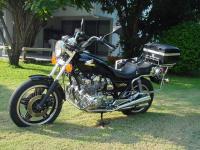
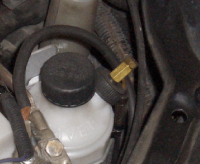
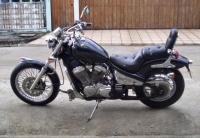
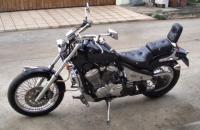
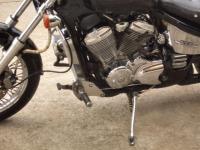
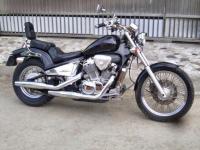
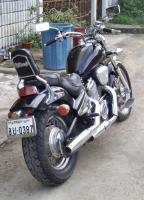
How Do I Get This To Thailand
in Thailand Motor Discussion
Posted
probably spending a lot more money than you did to buy the car..... if you ever get it in